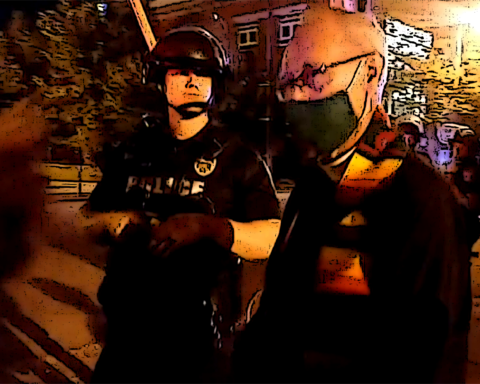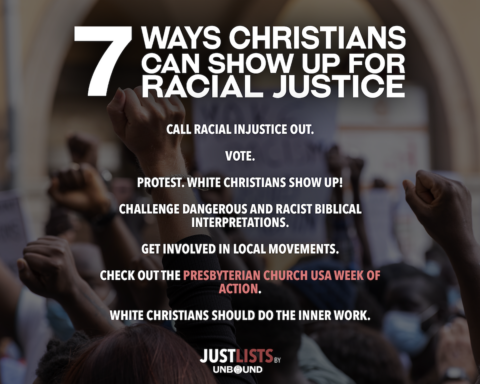
I was sitting in my eighth grade classroom with 20 or so other students, mid-afternoon on May 17, 1954. I don’t recall the subject we were discussing, but the acting principal of my 12-grade school in Monroe, NC, opened the classroom door and stepped into the room.
He began to speak, “I just came to let you all know that the Supreme Court just ruled on Brown v. Board of Education, and you will be going to school with white students in the future.” Our mouths dropped open as we each sat there imagining what it would be like to be in class with white students. We all were thinking, of course, that the change would be more or less immediate, that we would be in integrated classrooms by 9th grade.
Monroe was a small mill town of about 7,000 people, roughly 25 miles southeast of Charlotte. It was on the main route of the Seaboard Airlines Railroad tracks from Atlanta to New York. Between the uptown section of Monroe and Newtown, where I lived, there were perhaps a dozen railroad tracks to be crossed, with a roundhouse and other necessary equipment. Many of the black men in Monroe had railroad jobs. The black women who worked either had mill jobs, taught school, or did domestic work for white families.
___________________________________________
Our mouths dropped open as we each sat there imagining what it would be like to be in class with white students.
___________________________________________
Winchester Avenue School, where I attended, was located in Newtown, a black neighborhood. The white schools were across the railroad tracks on the other side of town. Our school generally had used textbooks, and most of the furniture was probably used as well. The science, biology, and chemistry laboratories ranged from poorly-equipped to non-existent. Almost all of the Monroe students walked to school since there were no school buses.
 Winchester happened to be right across the street from my house. Most of our teachers lived in the neighborhood and would frequently see our parents or visit our homes. Two or three times a year, the white superintendent of Monroe schools would visit Winchester. Other than those visits and a couple of white store owners on the edges of Newtown, I rarely saw or came in contact with white people.
Winchester happened to be right across the street from my house. Most of our teachers lived in the neighborhood and would frequently see our parents or visit our homes. Two or three times a year, the white superintendent of Monroe schools would visit Winchester. Other than those visits and a couple of white store owners on the edges of Newtown, I rarely saw or came in contact with white people.
Quite a few of my fellow students from Winchester walked across town to their homes in other neighborhoods, and there were white students on the periphery of Newtown who would cross the tracks to the white schools. I recall hearing stories that when all of the schools got out at 3 PM, students would meet and get into fights. They settled that problem by having the black students stay in school until 3:30.
Our teachers at Winchester always told us that we had to work hard. If we wanted to achieve, we were going to have to be “better” than the white kids. This left us with the impression that all white kids were very smart, and that we had a really tough job ahead of us. On that day in 1954, it was not only the fear of racism that seized us, but also the fear of not being smart enough in class.
___________________________________________
Our teachers at Winchester always told us that we had to work hard. If we wanted to achieve, we were going to have to be “better” than the white kids.
___________________________________________
We had some teachers who were extremely dedicated. One remembered fondly was the high school English teacher. She accepted no nonsense in her class. We did grammar, wrote and discussed essays, read literature. We were not excused from her class to decorate homecoming floats. She lived in Charlotte, but many were the afternoons in Newtown when we saw her walking the streets visiting the homes of her students. She sponsored dramatic plays. If there was an especially promising student who lacked funds for college, she helped them find a summer job up North. She never stopped encouraging us.

Photo credit: Appalachian State University, NC
From our perspective, there was no movement to integrate Winchester by May of 1956, when my parents, both products of the United Presbyterian Church’s Knoxville Academy/College in Tennessee, sent me to a Methodist boarding school in Asheville, NC. Mom taught in the county schools outside Monroe, and I would often be at home alone one or two hours after school because Dad was out collecting insurance premiums from clients. Mom did not want me home alone and thus decided to send me to Allen. At Allen High School, half of my teachers were white missionaries; the school had been established for black females in the North Carolina mountains because schools for that population were either poor or non-existent.
By then, black families in Charlotte were seeking to attend all-white schools. Dorothy Counts, the daughter of a Presbyterian Seminary Professor at Johnson C. Smith Seminary, made national headlines for her efforts to integrate a Charlotte high school. After the emotional stress of her one- or two-year effort, Dorothy, too, attended Allen High School.
Black students and parents in Prince Edward County, VA, were making the same efforts. Prince Edward County chose to close their schools rather than integrate, forcing several of my future college classmates at Hampton Institute in Virginia to go and live with relatives in order to graduate from high school. One of those students was to become a published author and professor of Black Studies at Stanford University.
___________________________________________
Because I entered the all-white situation when in my late 20s, I am deeply aware of how much I benefited from doors that were opened by black peers, who in many cases sustained significant damage from their experiences.
___________________________________________
My exposure to whites increased as I completed college and went to work at NASA. I was hired as a mathematician in a support role to the engineers, while men with my same educational background were hired as engineers.
I soon realized that I desperately wanted to work as an engineer. After a several-year battle, I was given the opportunity to apply for graduate school in engineering with classes being taught at NASA. I puzzled for many weeks over this decision. I knew the class would be mostly white males, and I could hear my elementary school teachers telling me how much smarter the white men were than I was. Finally, with much prayer and determination, I applied to the program – and was accepted. I still remember walking into my first class with all the courage I could summon: I looked around to see that the class was made up of 7 white males and me.

Yes, I was generally ignored for several weeks, and I said very little in class. But after the first test (which was very mathematical, my strength!), several classmates invited me to join a study group. With that request, my fear over that mixed class essentially dissipated. I joined the study group and actually ended up being one of the only members of that class to graduate with a Doctorate in Mechanical Engineering.
That degree, my parents’ persistent stress on education, and all the education and experience in my background led to a 25-year research career at NASA, followed by a 15-year career in management and executive leadership. Because I entered the all-white situation when in my late 20s, I am deeply aware of how much I benefited from doors that were opened by black peers – some at NASA – who in many cases sustained significant damage from their experiences of integrating elementary, secondary, or even college classes all alone.
I am grateful to those who went before me in the struggle for integration, and I hope and trust that my experience at NASA has helped pave the way for black students who have come after me. Our work for equity and quality in education for all of God’s children is far from over, but it is my hope that my story and my efforts – and the many stories and efforts of others – have forged a few courageous steps in the right direction.
*****
AUTHOR BIO: Christine Darden, a native of Monroe NC, is a retired engineer and executive from NASA Langley Research Center in Hampton, VA. She was in 8th grade when Brown v Board of Education was decided, in high school when initial school integration efforts started in various towns and cities in the South, and in college when the lunch counter sit-ins began among college students. A life-long Presbyterian, she played a leadership role in the 1980s PCUS and PCUSA merger at the presbytery and synod levels in the mid-Atlantic region. She currently serves as Co-Chair of the General Assembly’s Advisory Committee on Social Witness Policy.
Read more articles in this issue: Pedagogy for the Distressed!
Read more articles in the “Struggles and Sacrifices” section!





Unbound Social